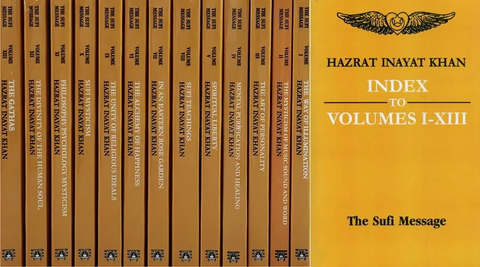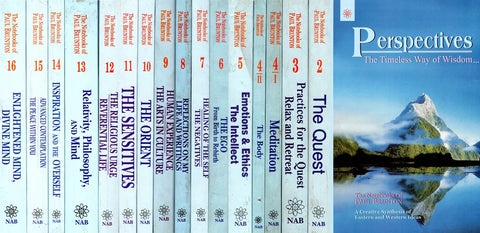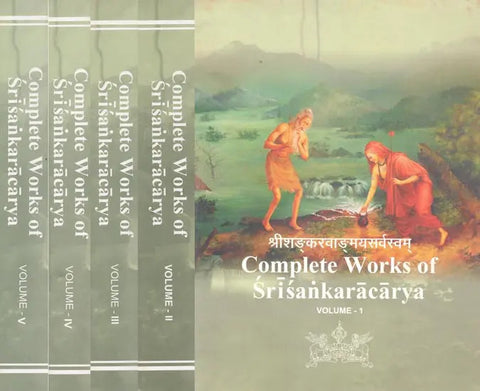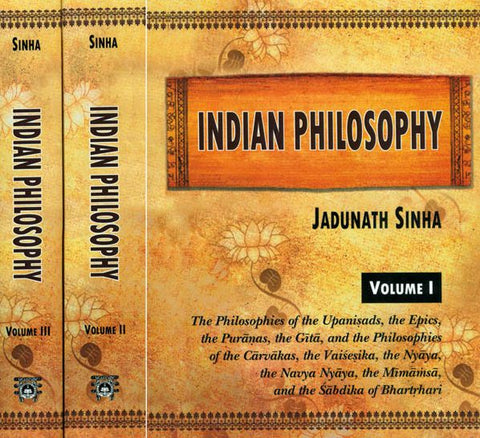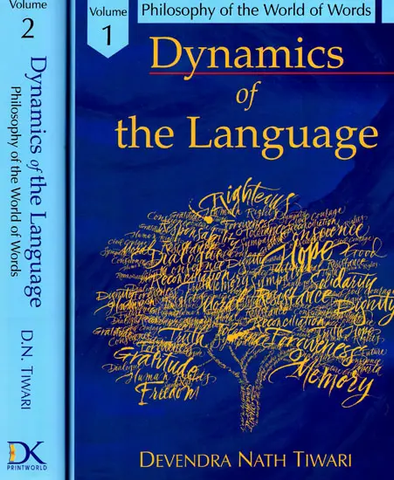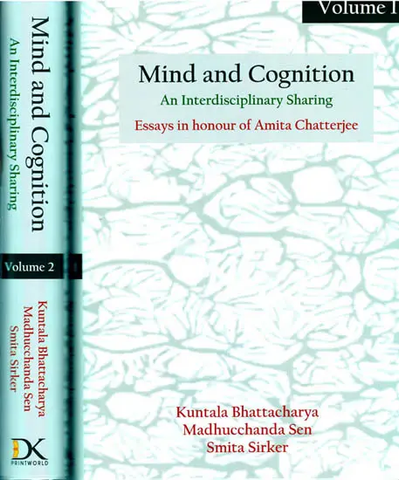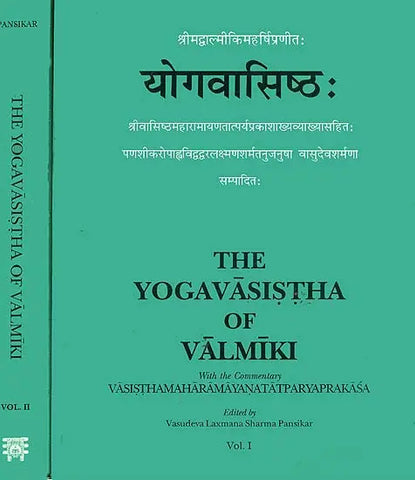Your cart is empty now.
Jiddu Krishnamurti was born in 1895 of Brahmin parents in south India. At the age of fourteen he was proclaimed the coming World Teacher by Annie Besant, then president of the Theosophical Society, an International organization that emphasized the unity of world religions. Mrs. Besant adopted the boy and took him to England, where he was educated and prepared for His coming role. In 1911 a new worldwide organization was formed with Krishnamurti as its head, solely to prepare its members for his advent as World Teacher. In 1929, after many years of questioning himself and destiny imposed upon him, Krishnamurti disbanded this organization saying:
Truth is a pathless land, and you cannot approach it by path whatsoever, by any religions, by any sect. Truth being limitless, unconditioned, unapproachable by any path whatsoever, cannot be organized; nor should any organization be formed to lead or lead or to coerce people along any particular path. My only concern is to set men absolutely, unconditionally free.
Unit end of his life at the age of ninety Krishnamurti traveled the world speaking as a private person. The rejection of all spiritual and psychological authority, including his own is a fundamental theme. A major concern is the social structure and how it conditions the individual. The emphasis in his talks and writings is on the psychological barriers that prevent clarity of perception. In the mirror of relationship, each of us can come to understand the content of his own consciousness, which is common to all humanity. We can do this, not analytically, but directly in a manner Krishnamurti describes at length. In observing this content we discover within ourselves the division of the observer and what is observer. He points out that this division, which prevents direct perception, is the root of human conflict.
His central vision did not waver after 1929, but Krishnamurti strove for the rest of his life to make his language even more simple and clear. There is a development in his exposition. Form year to year he used new terms and new approaches to his subject, with different nuances.
Because his subject is all-embracing, the Collected Works are of compelling interest. Within his talks in any one year, Krishnamurti was not able to cover the whole range of his vision, but broad amplifications of particular themes are founds throughout these volumes. In them he lays the foundations of many of the concepts he used in later years.
The Collected Works contain Krishnamurti's previously published talks, discussions, answers to specific questions, and writings for the year 1933 through 1967. They are an authentic record of his teachings, taken from transcripts of verbatim shorthand reports and tape recordings.
The Krishnamurti Foundation of America, a Californian charitable trust, has among its purpose the publications and distribution of Krishnamurti books, videocassettes, films and tape recordings. The production of the Collected Works is one of these activities.

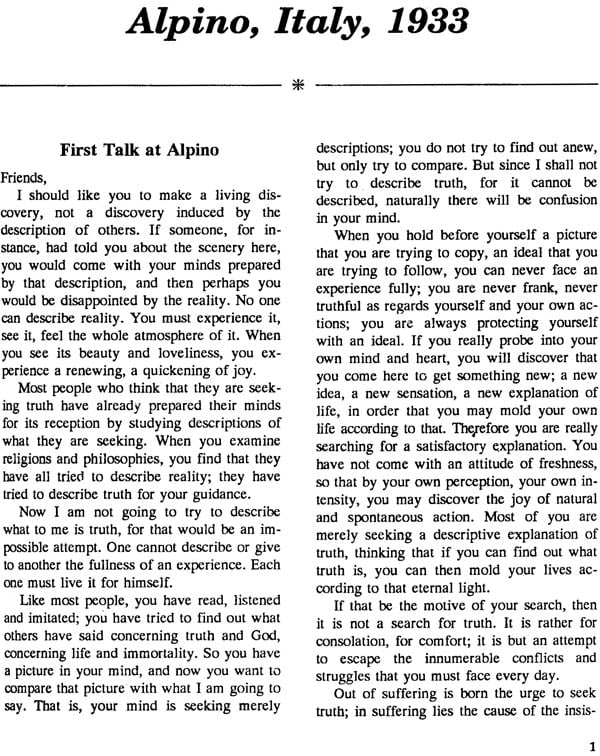




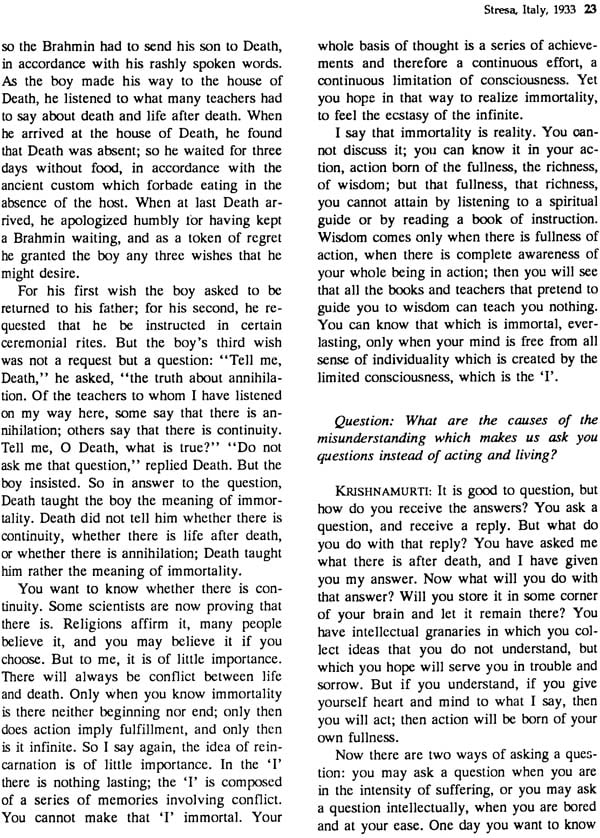
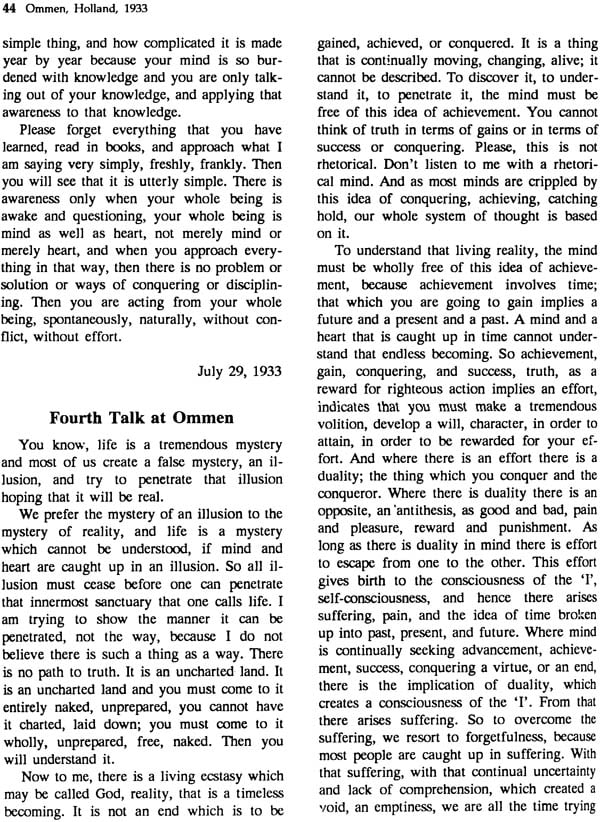

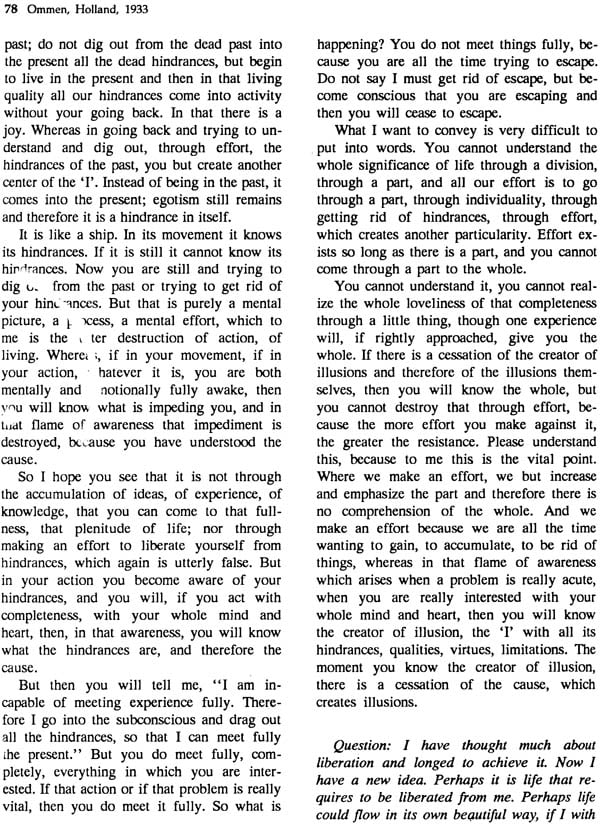

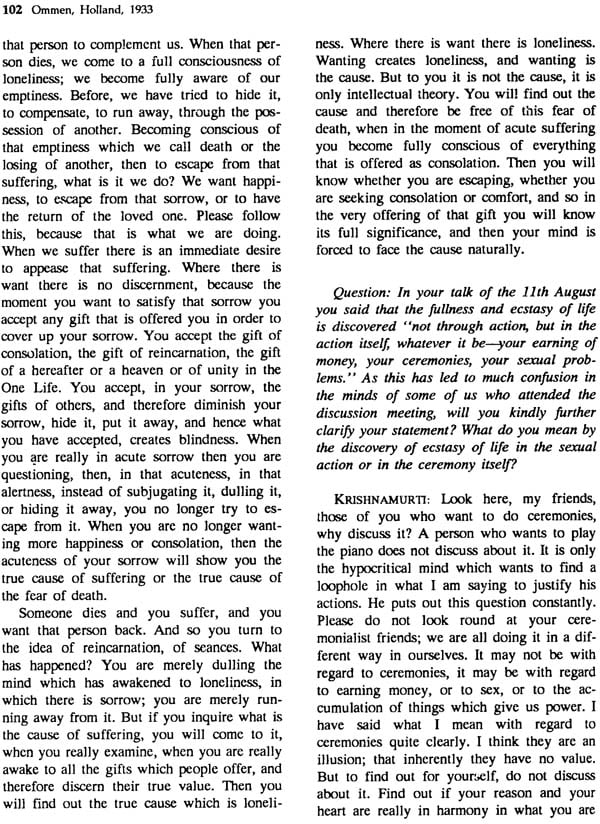
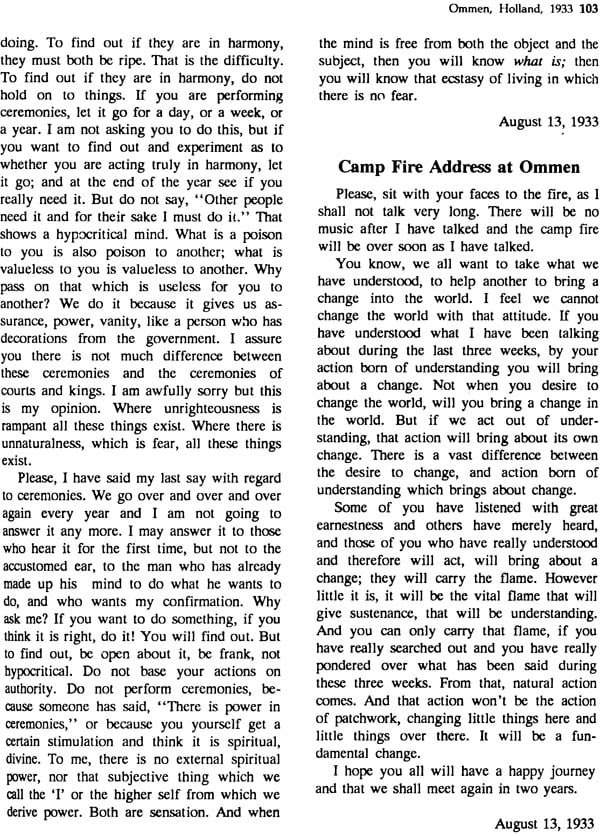

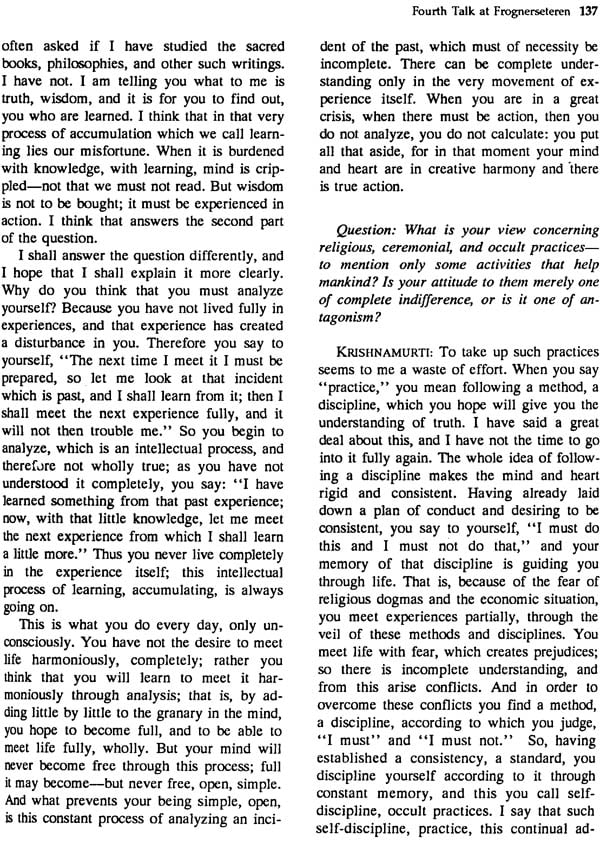

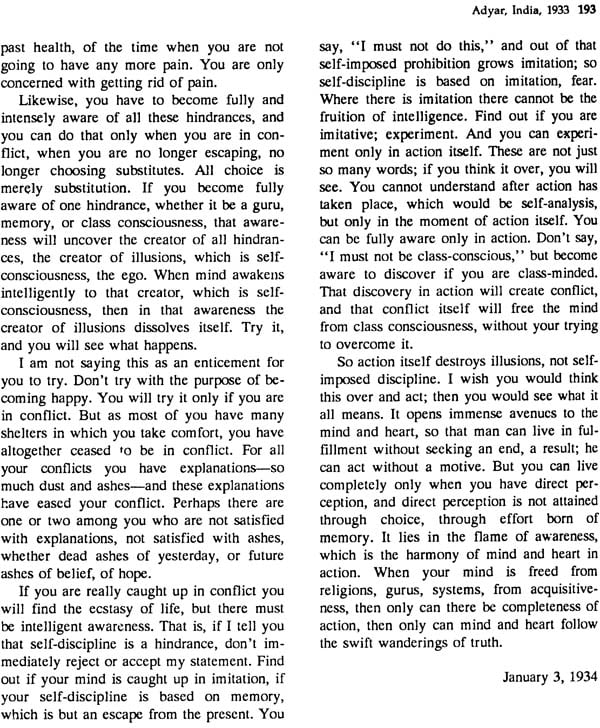
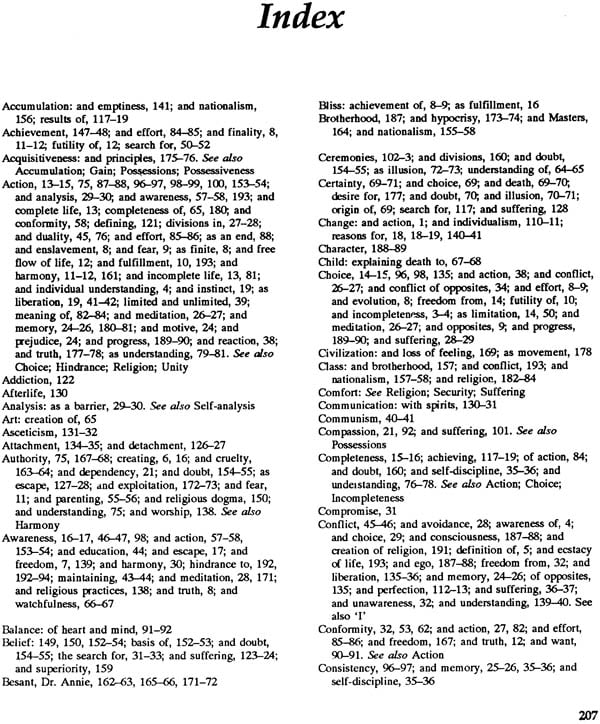
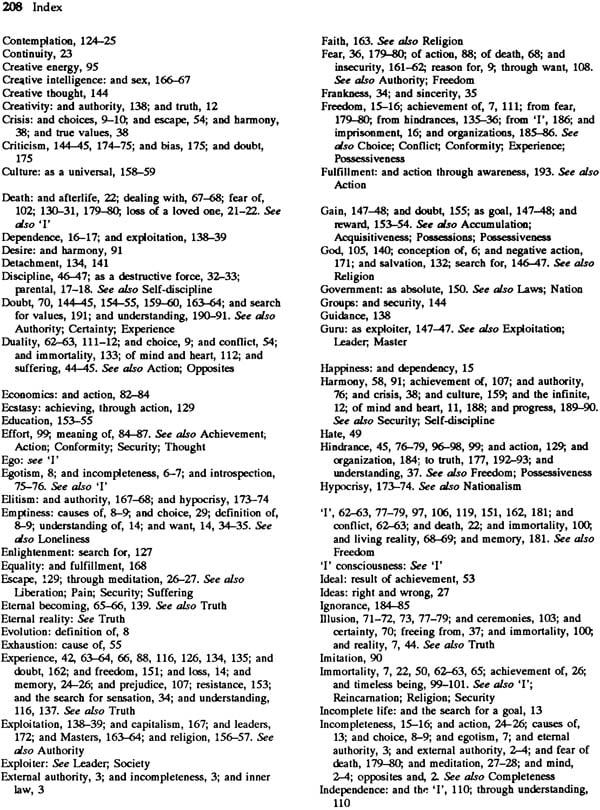
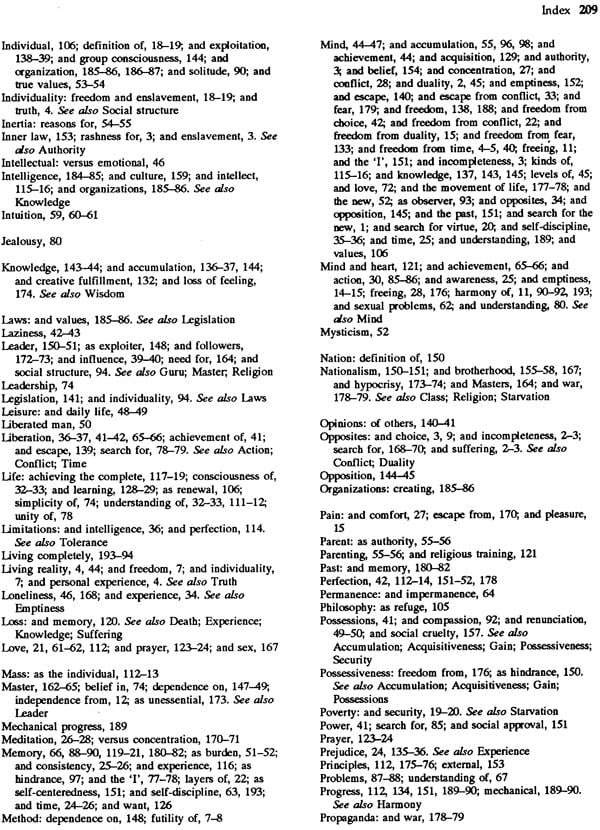

Jiddu Krishnamurti was born in 1895 of Brahmin parents in south India. At the age of fourteen he was proclaimed the coming World Teacher by Annie Besant, then president of the Theosophical Society, an International organization that emphasized the unity of world religions. Mrs. Besant adopted the boy and took him to England, where he was educated and prepared for His coming role. In 1911 a new worldwide organization was formed with Krishnamurti as its head, solely to prepare its members for his advent as World Teacher. In 1929, after many years of questioning himself and destiny imposed upon him, Krishnamurti disbanded this organization saying:
Truth is a pathless land, and you cannot approach it by path whatsoever, by any religions, by any sect. Truth being limitless, unconditioned, unapproachable by any path whatsoever, cannot be organized; nor should any organization be formed to lead or lead or to coerce people along any particular path. My only concern is to set men absolutely, unconditionally free.
Unit end of his life at the age of ninety Krishnamurti traveled the world speaking as a private person. The rejection of all spiritual and psychological authority, including his own is a fundamental theme. A major concern is the social structure and how it conditions the individual. The emphasis in his talks and writings is on the psychological barriers that prevent clarity of perception. In the mirror of relationship, each of us can come to understand the content of his own consciousness, which is common to all humanity. We can do this, not analytically, but directly in a manner Krishnamurti describes at length. In observing this content we discover within ourselves the division of the observer and what is observer. He points out that this division, which prevents direct perception, is the root of human conflict.
His central vision did not waver after 1929, but Krishnamurti strove for the rest of his life to make his language even more simple and clear. There is a development in his exposition. Form year to year he used new terms and new approaches to his subject, with different nuances.
Because his subject is all-embracing, the Collected Works are of compelling interest. Within his talks in any one year, Krishnamurti was not able to cover the whole range of his vision, but broad amplifications of particular themes are founds throughout these volumes. In them he lays the foundations of many of the concepts he used in later years.
The Collected Works contain Krishnamurti's previously published talks, discussions, answers to specific questions, and writings for the year 1933 through 1967. They are an authentic record of his teachings, taken from transcripts of verbatim shorthand reports and tape recordings.
The Krishnamurti Foundation of America, a Californian charitable trust, has among its purpose the publications and distribution of Krishnamurti books, videocassettes, films and tape recordings. The production of the Collected Works is one of these activities.





















Jiddu Krishnamurti was born in 1895 of Brahmin parents in south India. At the age of fourteen he was proclaimed the coming World Teacher by Annie Besant, then president of the Theosophical Society, an International organization that emphasized the unity of world religions. Mrs. Besant adopted the boy and took him to England, where he was educated and prepared for His coming role. In 1911 a new worldwide organization was formed with Krishnamurti as its head, solely to prepare its members for his advent as World Teacher. In 1929, after many years of questioning himself and destiny imposed upon him, Krishnamurti disbanded this organization saying:
Truth is a pathless land, and you cannot approach it by path whatsoever, by any religions, by any sect. Truth being limitless, unconditioned, unapproachable by any path whatsoever, cannot be organized; nor should any organization be formed to lead or lead or to coerce people along any particular path. My only concern is to set men absolutely, unconditionally free.
Unit end of his life at the age of ninety Krishnamurti traveled the world speaking as a private person. The rejection of all spiritual and psychological authority, including his own is a fundamental theme. A major concern is the social structure and how it conditions the individual. The emphasis in his talks and writings is on the psychological barriers that prevent clarity of perception. In the mirror of relationship, each of us can come to understand the content of his own consciousness, which is common to all humanity. We can do this, not analytically, but directly in a manner Krishnamurti describes at length. In observing this content we discover within ourselves the division of the observer and what is observer. He points out that this division, which prevents direct perception, is the root of human conflict.
His central vision did not waver after 1929, but Krishnamurti strove for the rest of his life to make his language even more simple and clear. There is a development in his exposition. Form year to year he used new terms and new approaches to his subject, with different nuances.
Because his subject is all-embracing, the Collected Works are of compelling interest. Within his talks in any one year, Krishnamurti was not able to cover the whole range of his vision, but broad amplifications of particular themes are founds throughout these volumes. In them he lays the foundations of many of the concepts he used in later years.
The Collected Works contain Krishnamurti's previously published talks, discussions, answers to specific questions, and writings for the year 1933 through 1967. They are an authentic record of his teachings, taken from transcripts of verbatim shorthand reports and tape recordings.
The Krishnamurti Foundation of America, a Californian charitable trust, has among its purpose the publications and distribution of Krishnamurti books, videocassettes, films and tape recordings. The production of the Collected Works is one of these activities.





















Jiddu Krishnamurti was born in 1895 of Brahmin parents in south India. At the age of fourteen he was proclaimed the coming World Teacher by Annie Besant, then president of the Theosophical Society, an International organization that emphasized the unity of world religions. Mrs. Besant adopted the boy and took him to England, where he was educated and prepared for His coming role. In 1911 a new worldwide organization was formed with Krishnamurti as its head, solely to prepare its members for his advent as World Teacher. In 1929, after many years of questioning himself and destiny imposed upon him, Krishnamurti disbanded this organization saying:
Truth is a pathless land, and you cannot approach it by path whatsoever, by any religions, by any sect. Truth being limitless, unconditioned, unapproachable by any path whatsoever, cannot be organized; nor should any organization be formed to lead or lead or to coerce people along any particular path. My only concern is to set men absolutely, unconditionally free.
Unit end of his life at the age of ninety Krishnamurti traveled the world speaking as a private person. The rejection of all spiritual and psychological authority, including his own is a fundamental theme. A major concern is the social structure and how it conditions the individual. The emphasis in his talks and writings is on the psychological barriers that prevent clarity of perception. In the mirror of relationship, each of us can come to understand the content of his own consciousness, which is common to all humanity. We can do this, not analytically, but directly in a manner Krishnamurti describes at length. In observing this content we discover within ourselves the division of the observer and what is observer. He points out that this division, which prevents direct perception, is the root of human conflict.
His central vision did not waver after 1929, but Krishnamurti strove for the rest of his life to make his language even more simple and clear. There is a development in his exposition. Form year to year he used new terms and new approaches to his subject, with different nuances.
Because his subject is all-embracing, the Collected Works are of compelling interest. Within his talks in any one year, Krishnamurti was not able to cover the whole range of his vision, but broad amplifications of particular themes are founds throughout these volumes. In them he lays the foundations of many of the concepts he used in later years.
The Collected Works contain Krishnamurti's previously published talks, discussions, answers to specific questions, and writings for the year 1933 through 1967. They are an authentic record of his teachings, taken from transcripts of verbatim shorthand reports and tape recordings.
The Krishnamurti Foundation of America, a Californian charitable trust, has among its purpose the publications and distribution of Krishnamurti books, videocassettes, films and tape recordings. The production of the Collected Works is one of these activities.





















Jiddu Krishnamurti was born in 1895 of Brahmin parents in south India. At the age of fourteen he was proclaimed the coming World Teacher by Annie Besant, then president of the Theosophical Society, an International organization that emphasized the unity of world religions. Mrs. Besant adopted the boy and took him to England, where he was educated and prepared for His coming role. In 1911 a new worldwide organization was formed with Krishnamurti as its head, solely to prepare its members for his advent as World Teacher. In 1929, after many years of questioning himself and destiny imposed upon him, Krishnamurti disbanded this organization saying:
Truth is a pathless land, and you cannot approach it by path whatsoever, by any religions, by any sect. Truth being limitless, unconditioned, unapproachable by any path whatsoever, cannot be organized; nor should any organization be formed to lead or lead or to coerce people along any particular path. My only concern is to set men absolutely, unconditionally free.
Unit end of his life at the age of ninety Krishnamurti traveled the world speaking as a private person. The rejection of all spiritual and psychological authority, including his own is a fundamental theme. A major concern is the social structure and how it conditions the individual. The emphasis in his talks and writings is on the psychological barriers that prevent clarity of perception. In the mirror of relationship, each of us can come to understand the content of his own consciousness, which is common to all humanity. We can do this, not analytically, but directly in a manner Krishnamurti describes at length. In observing this content we discover within ourselves the division of the observer and what is observer. He points out that this division, which prevents direct perception, is the root of human conflict.
His central vision did not waver after 1929, but Krishnamurti strove for the rest of his life to make his language even more simple and clear. There is a development in his exposition. Form year to year he used new terms and new approaches to his subject, with different nuances.
Because his subject is all-embracing, the Collected Works are of compelling interest. Within his talks in any one year, Krishnamurti was not able to cover the whole range of his vision, but broad amplifications of particular themes are founds throughout these volumes. In them he lays the foundations of many of the concepts he used in later years.
The Collected Works contain Krishnamurti's previously published talks, discussions, answers to specific questions, and writings for the year 1933 through 1967. They are an authentic record of his teachings, taken from transcripts of verbatim shorthand reports and tape recordings.
The Krishnamurti Foundation of America, a Californian charitable trust, has among its purpose the publications and distribution of Krishnamurti books, videocassettes, films and tape recordings. The production of the Collected Works is one of these activities.





















Jiddu Krishnamurti was born in 1895 of Brahmin parents in south India. At the age of fourteen he was proclaimed the coming World Teacher by Annie Besant, then president of the Theosophical Society, an International organization that emphasized the unity of world religions. Mrs. Besant adopted the boy and took him to England, where he was educated and prepared for His coming role. In 1911 a new worldwide organization was formed with Krishnamurti as its head, solely to prepare its members for his advent as World Teacher. In 1929, after many years of questioning himself and destiny imposed upon him, Krishnamurti disbanded this organization saying:
Truth is a pathless land, and you cannot approach it by path whatsoever, by any religions, by any sect. Truth being limitless, unconditioned, unapproachable by any path whatsoever, cannot be organized; nor should any organization be formed to lead or lead or to coerce people along any particular path. My only concern is to set men absolutely, unconditionally free.
Unit end of his life at the age of ninety Krishnamurti traveled the world speaking as a private person. The rejection of all spiritual and psychological authority, including his own is a fundamental theme. A major concern is the social structure and how it conditions the individual. The emphasis in his talks and writings is on the psychological barriers that prevent clarity of perception. In the mirror of relationship, each of us can come to understand the content of his own consciousness, which is common to all humanity. We can do this, not analytically, but directly in a manner Krishnamurti describes at length. In observing this content we discover within ourselves the division of the observer and what is observer. He points out that this division, which prevents direct perception, is the root of human conflict.
His central vision did not waver after 1929, but Krishnamurti strove for the rest of his life to make his language even more simple and clear. There is a development in his exposition. Form year to year he used new terms and new approaches to his subject, with different nuances.
Because his subject is all-embracing, the Collected Works are of compelling interest. Within his talks in any one year, Krishnamurti was not able to cover the whole range of his vision, but broad amplifications of particular themes are founds throughout these volumes. In them he lays the foundations of many of the concepts he used in later years.
The Collected Works contain Krishnamurti's previously published talks, discussions, answers to specific questions, and writings for the year 1933 through 1967. They are an authentic record of his teachings, taken from transcripts of verbatim shorthand reports and tape recordings.
The Krishnamurti Foundation of America, a Californian charitable trust, has among its purpose the publications and distribution of Krishnamurti books, videocassettes, films and tape recordings. The production of the Collected Works is one of these activities.





















Jiddu Krishnamurti was born in 1895 of Brahmin parents in south India. At the age of fourteen he was proclaimed the coming World Teacher by Annie Besant, then president of the Theosophical Society, an International organization that emphasized the unity of world religions. Mrs. Besant adopted the boy and took him to England, where he was educated and prepared for His coming role. In 1911 a new worldwide organization was formed with Krishnamurti as its head, solely to prepare its members for his advent as World Teacher. In 1929, after many years of questioning himself and destiny imposed upon him, Krishnamurti disbanded this organization saying:
Truth is a pathless land, and you cannot approach it by path whatsoever, by any religions, by any sect. Truth being limitless, unconditioned, unapproachable by any path whatsoever, cannot be organized; nor should any organization be formed to lead or lead or to coerce people along any particular path. My only concern is to set men absolutely, unconditionally free.
Unit end of his life at the age of ninety Krishnamurti traveled the world speaking as a private person. The rejection of all spiritual and psychological authority, including his own is a fundamental theme. A major concern is the social structure and how it conditions the individual. The emphasis in his talks and writings is on the psychological barriers that prevent clarity of perception. In the mirror of relationship, each of us can come to understand the content of his own consciousness, which is common to all humanity. We can do this, not analytically, but directly in a manner Krishnamurti describes at length. In observing this content we discover within ourselves the division of the observer and what is observer. He points out that this division, which prevents direct perception, is the root of human conflict.
His central vision did not waver after 1929, but Krishnamurti strove for the rest of his life to make his language even more simple and clear. There is a development in his exposition. Form year to year he used new terms and new approaches to his subject, with different nuances.
Because his subject is all-embracing, the Collected Works are of compelling interest. Within his talks in any one year, Krishnamurti was not able to cover the whole range of his vision, but broad amplifications of particular themes are founds throughout these volumes. In them he lays the foundations of many of the concepts he used in later years.
The Collected Works contain Krishnamurti's previously published talks, discussions, answers to specific questions, and writings for the year 1933 through 1967. They are an authentic record of his teachings, taken from transcripts of verbatim shorthand reports and tape recordings.
The Krishnamurti Foundation of America, a Californian charitable trust, has among its purpose the publications and distribution of Krishnamurti books, videocassettes, films and tape recordings. The production of the Collected Works is one of these activities.





















Jiddu Krishnamurti was born in 1895 of Brahmin parents in south India. At the age of fourteen he was proclaimed the coming World Teacher by Annie Besant, then president of the Theosophical Society, an International organization that emphasized the unity of world religions. Mrs. Besant adopted the boy and took him to England, where he was educated and prepared for His coming role. In 1911 a new worldwide organization was formed with Krishnamurti as its head, solely to prepare its members for his advent as World Teacher. In 1929, after many years of questioning himself and destiny imposed upon him, Krishnamurti disbanded this organization saying:
Truth is a pathless land, and you cannot approach it by path whatsoever, by any religions, by any sect. Truth being limitless, unconditioned, unapproachable by any path whatsoever, cannot be organized; nor should any organization be formed to lead or lead or to coerce people along any particular path. My only concern is to set men absolutely, unconditionally free.
Unit end of his life at the age of ninety Krishnamurti traveled the world speaking as a private person. The rejection of all spiritual and psychological authority, including his own is a fundamental theme. A major concern is the social structure and how it conditions the individual. The emphasis in his talks and writings is on the psychological barriers that prevent clarity of perception. In the mirror of relationship, each of us can come to understand the content of his own consciousness, which is common to all humanity. We can do this, not analytically, but directly in a manner Krishnamurti describes at length. In observing this content we discover within ourselves the division of the observer and what is observer. He points out that this division, which prevents direct perception, is the root of human conflict.
His central vision did not waver after 1929, but Krishnamurti strove for the rest of his life to make his language even more simple and clear. There is a development in his exposition. Form year to year he used new terms and new approaches to his subject, with different nuances.
Because his subject is all-embracing, the Collected Works are of compelling interest. Within his talks in any one year, Krishnamurti was not able to cover the whole range of his vision, but broad amplifications of particular themes are founds throughout these volumes. In them he lays the foundations of many of the concepts he used in later years.
The Collected Works contain Krishnamurti's previously published talks, discussions, answers to specific questions, and writings for the year 1933 through 1967. They are an authentic record of his teachings, taken from transcripts of verbatim shorthand reports and tape recordings.
The Krishnamurti Foundation of America, a Californian charitable trust, has among its purpose the publications and distribution of Krishnamurti books, videocassettes, films and tape recordings. The production of the Collected Works is one of these activities.












VOL 2
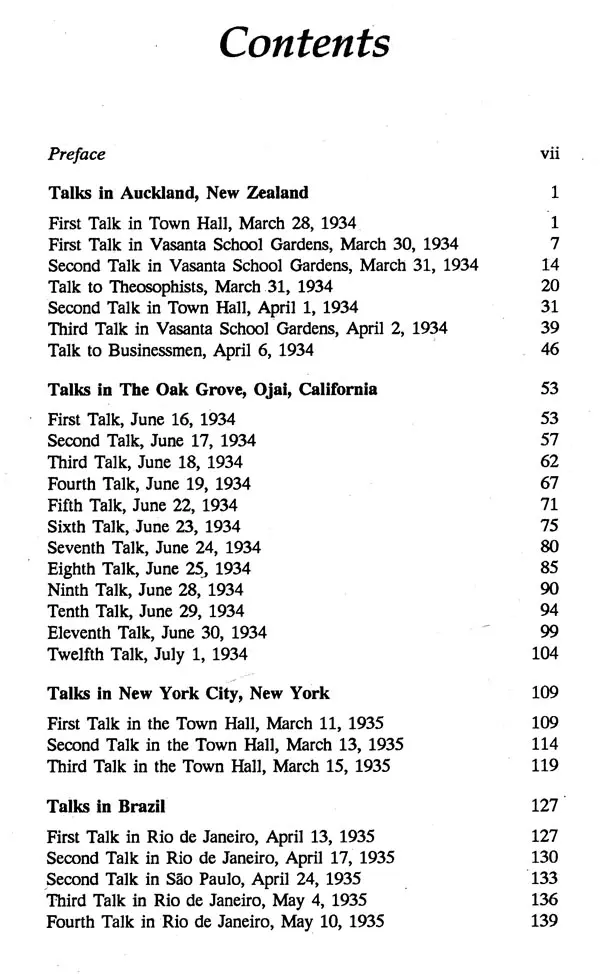

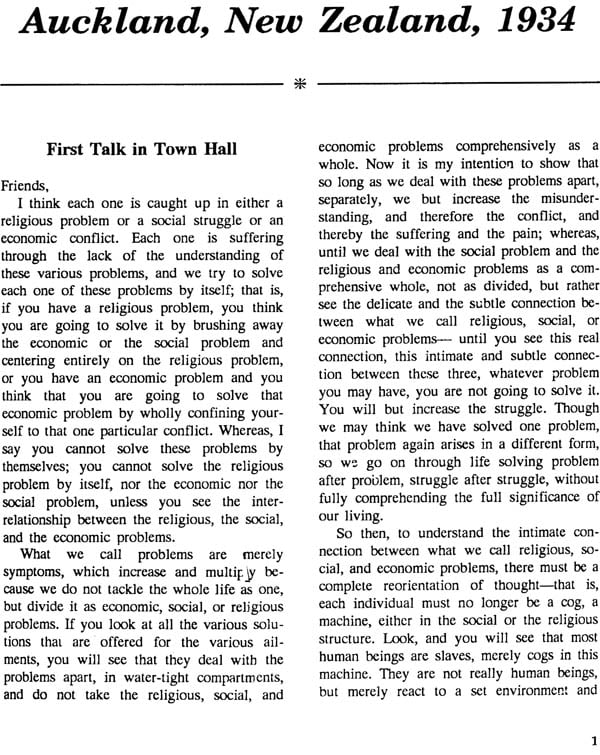
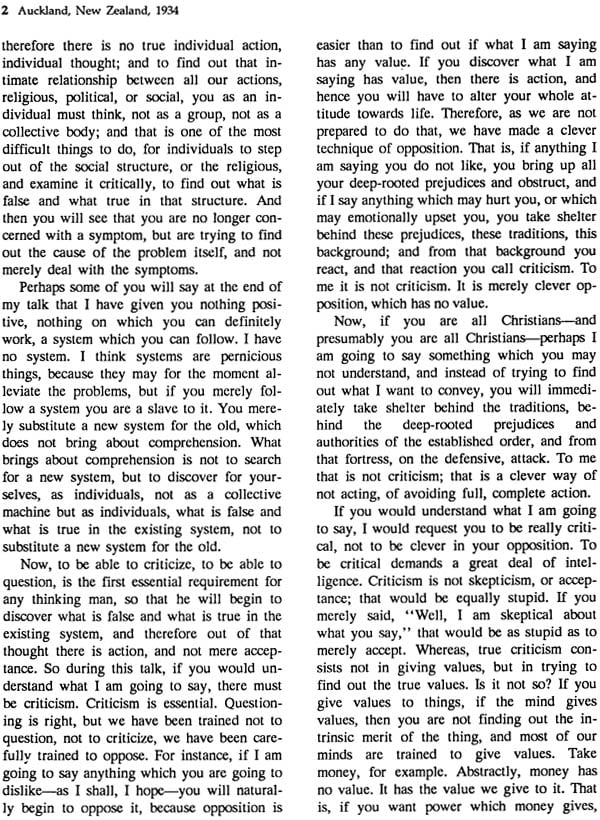
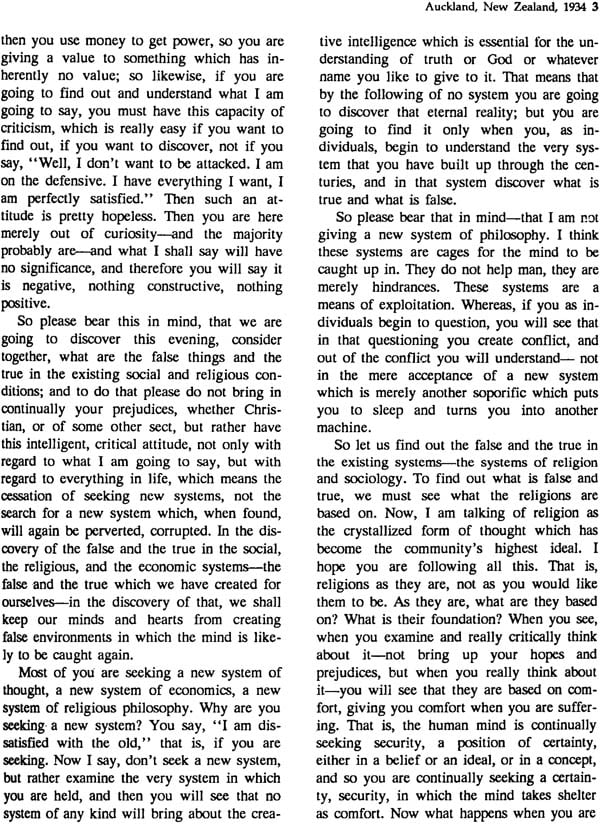
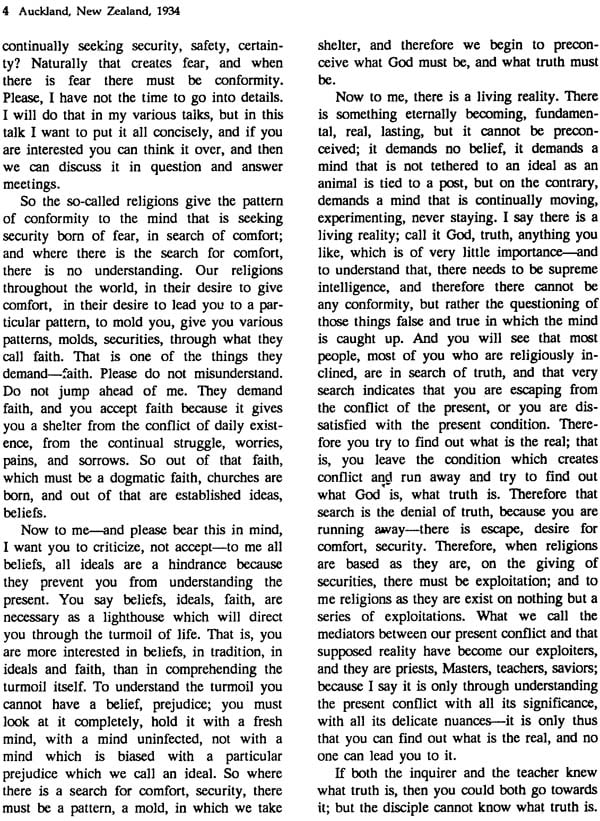
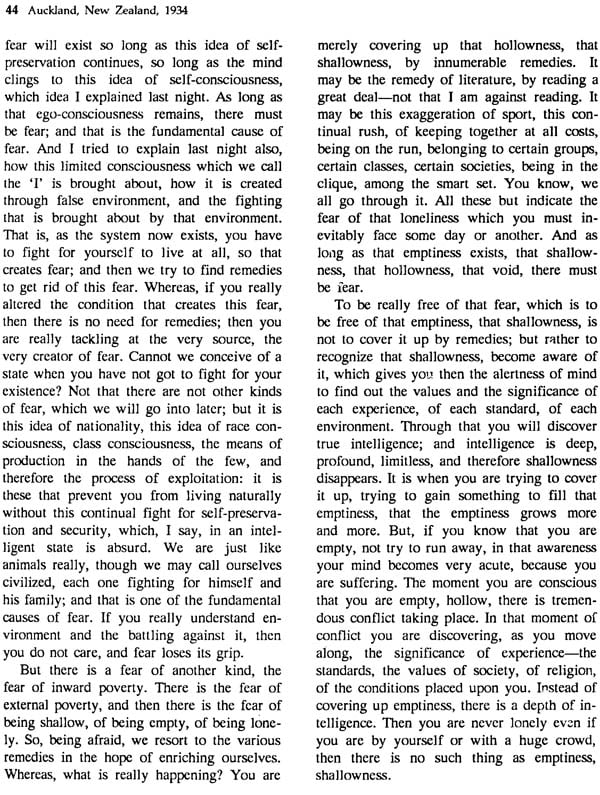
VOL 3



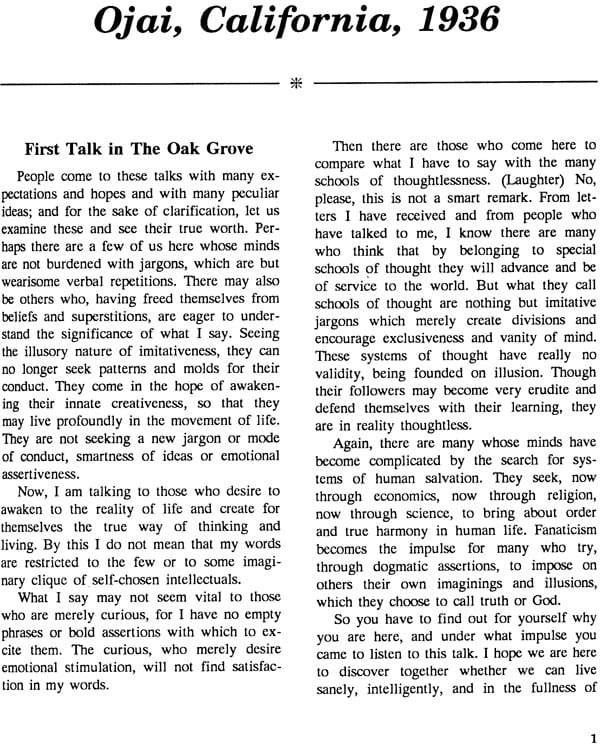
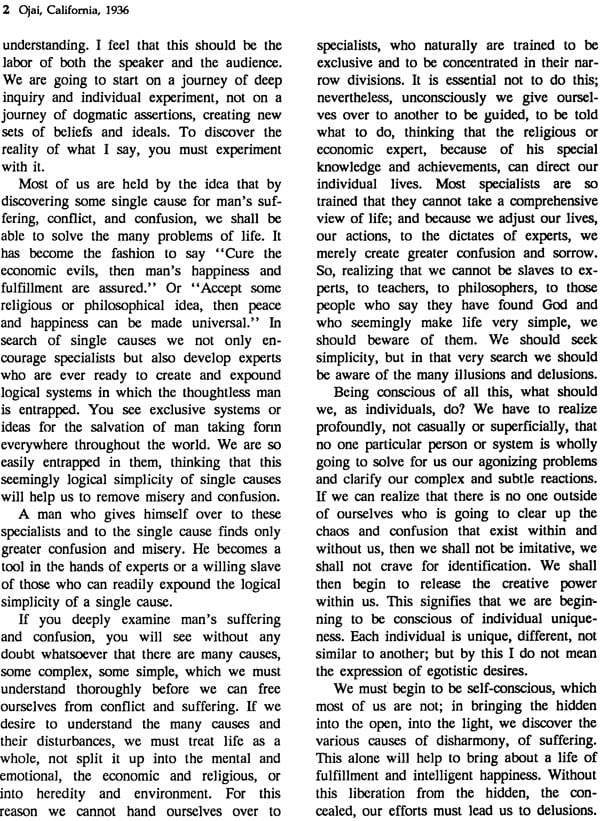

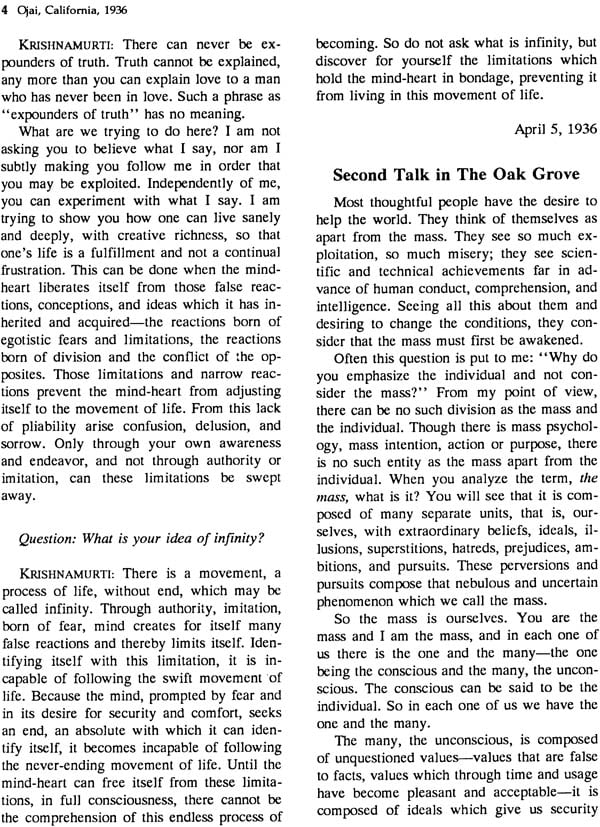

VOL 4
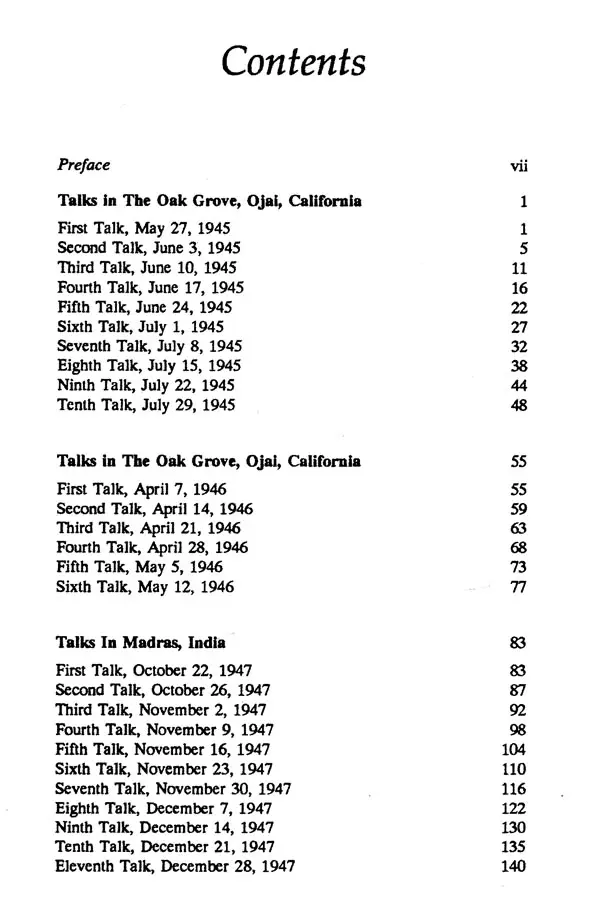
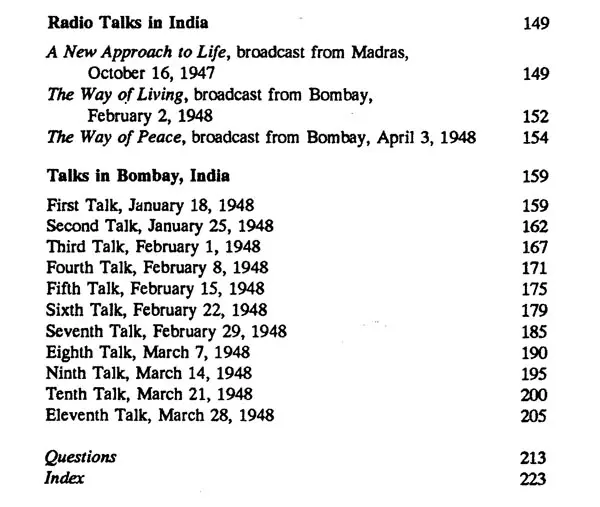
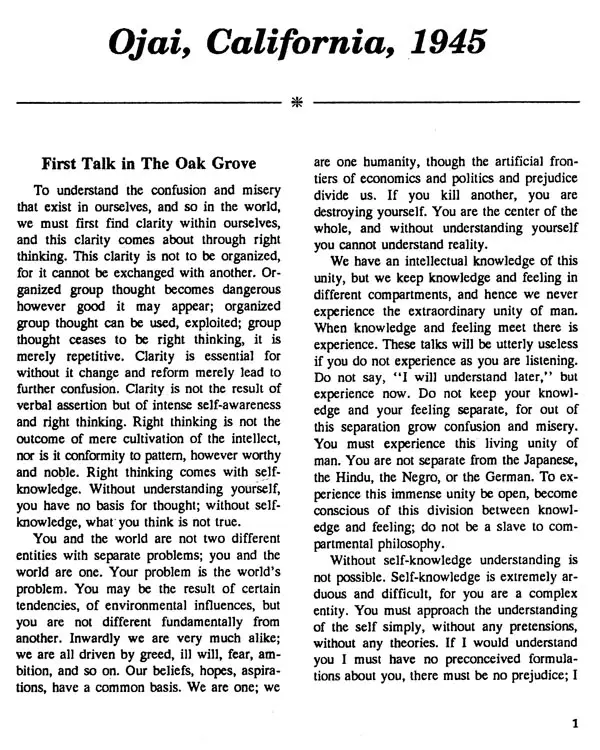
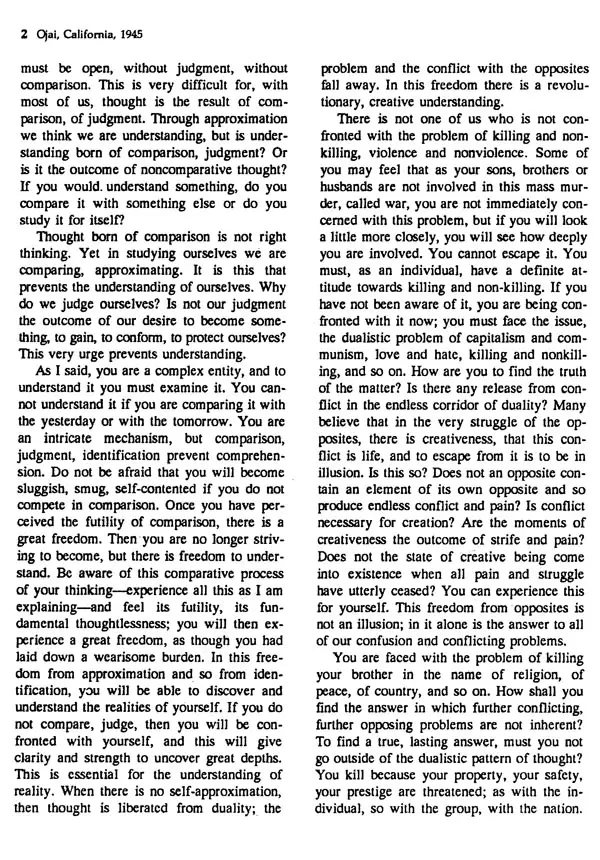
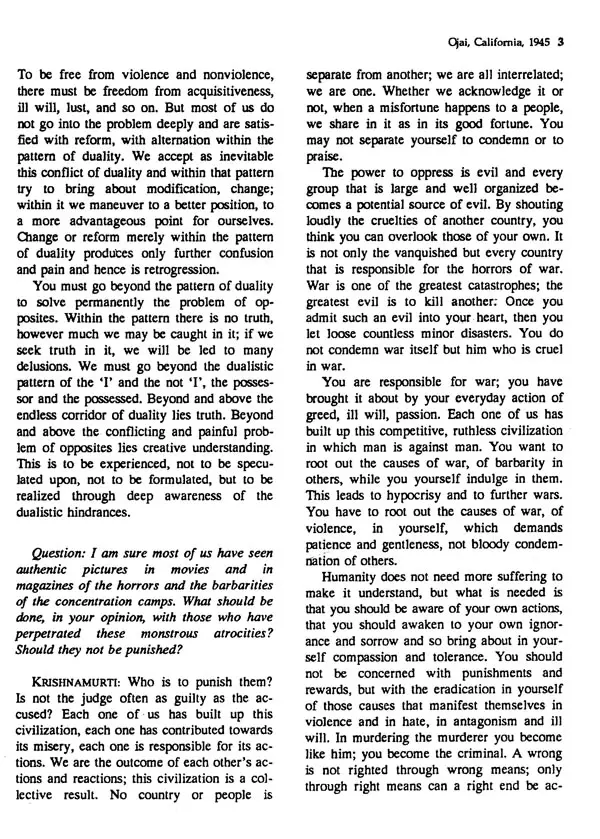
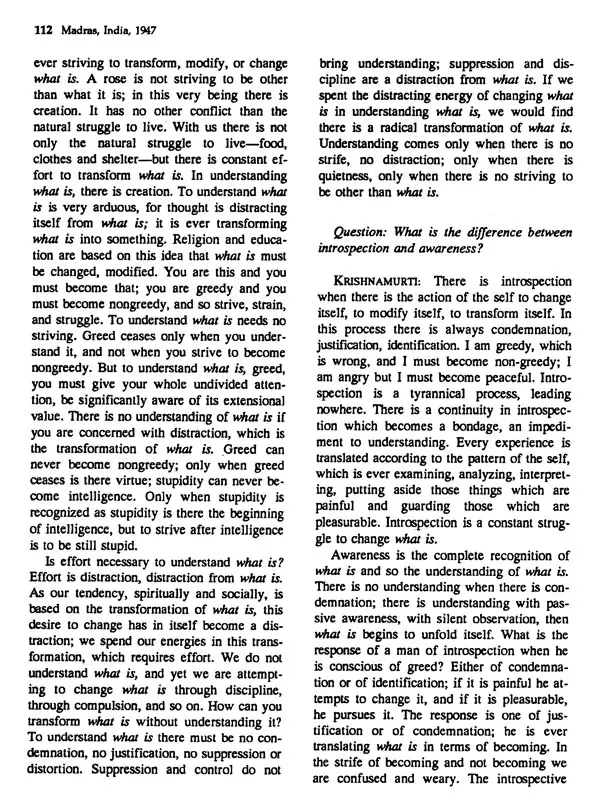
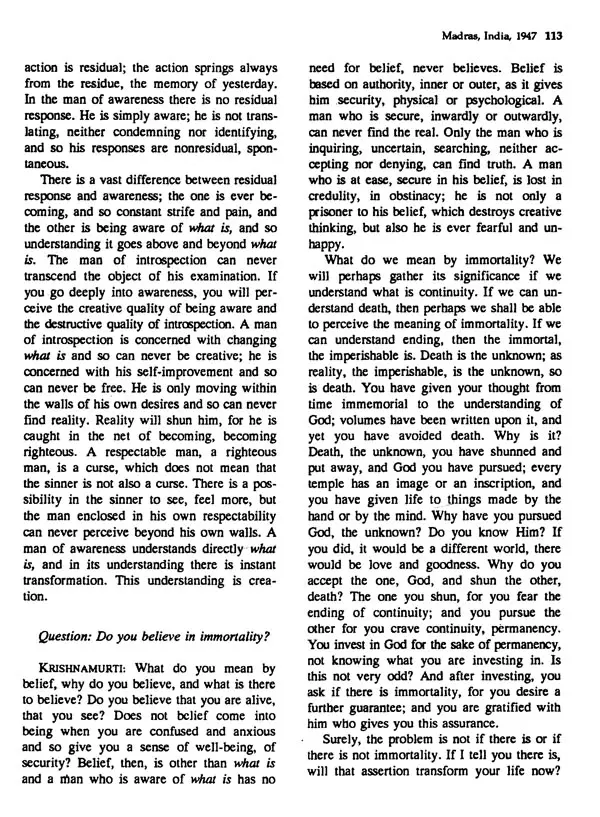

VOL 5

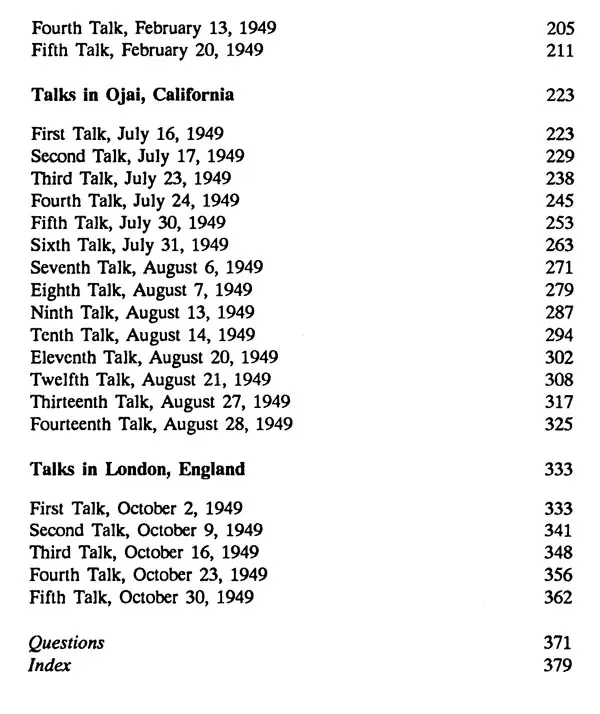
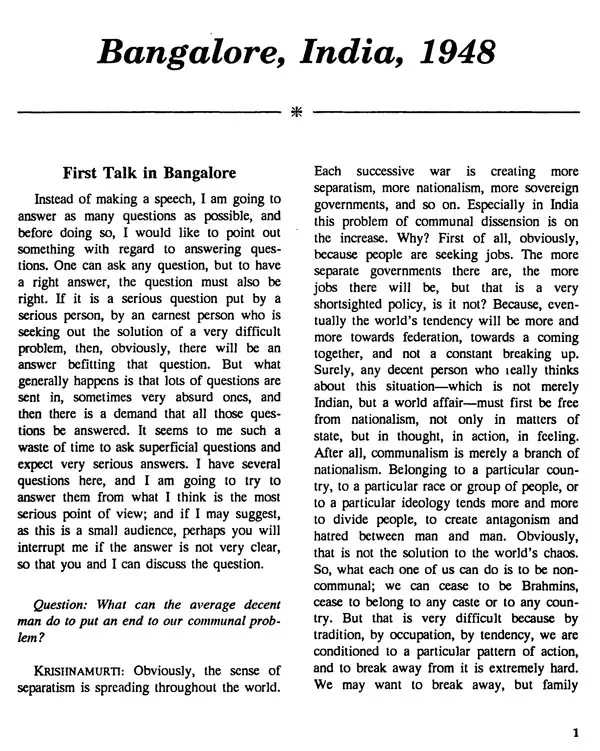

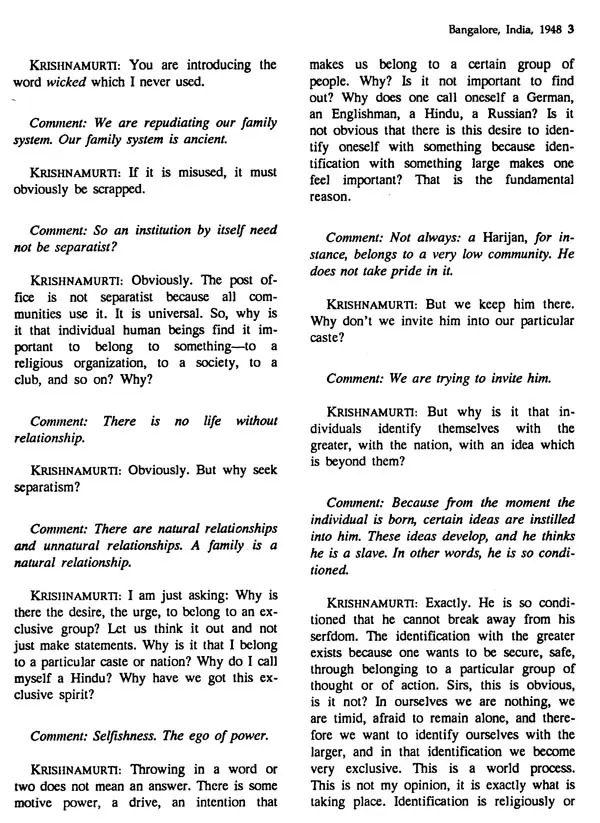
VOL 6

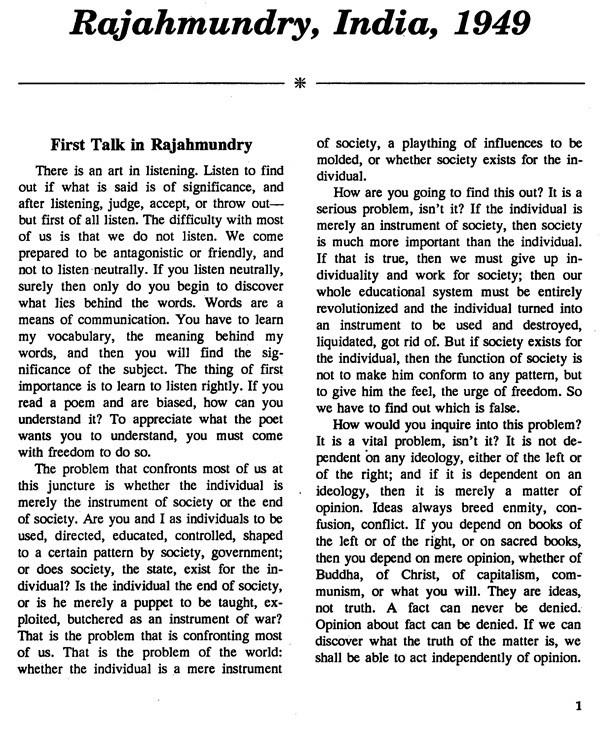
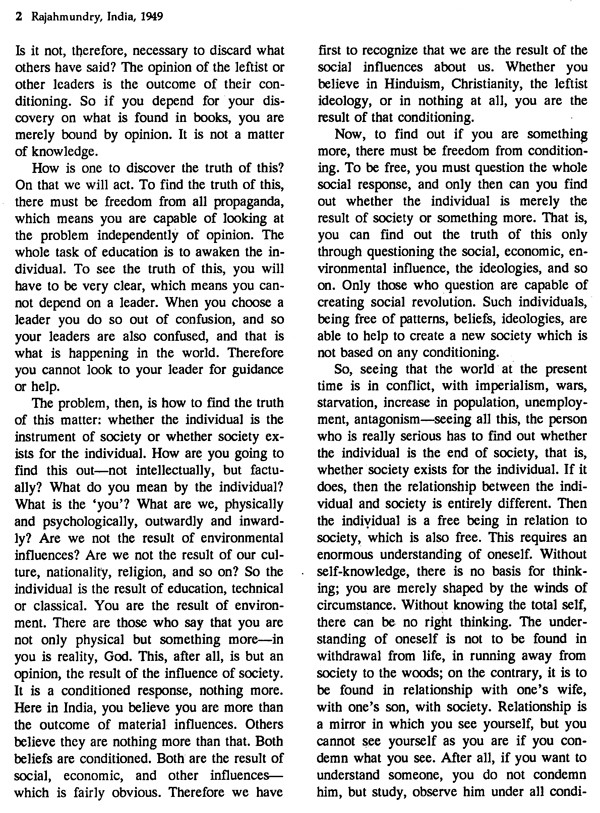

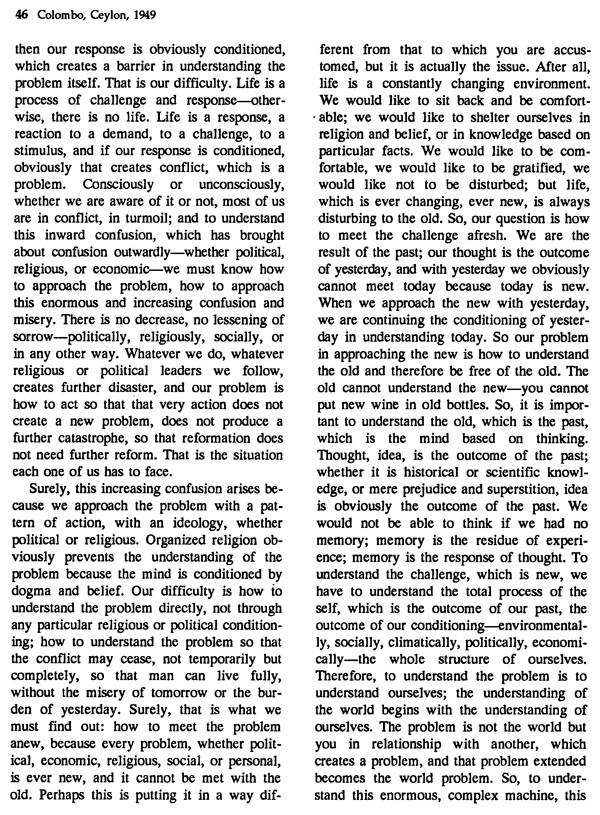
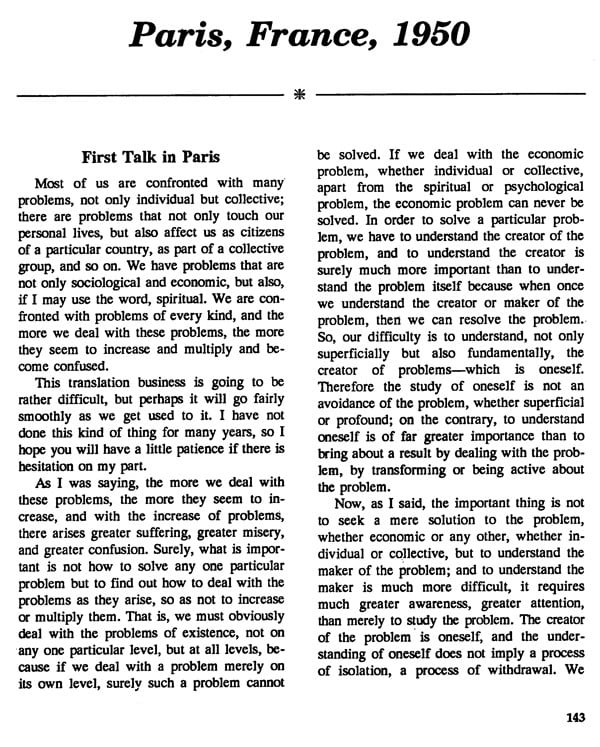
Delivery and Shipping Policy
- INTERNATIONAL SHIPPING
- Rs.1000-1100/kg
- ESTD. Delivery Time: 2-3 weeks (depending on location)
- Bubble Wrapped with Extra Padding
- NATIONAL SHIPPING
- NCR: Rs. 30/half kg
- Standard: Rs. 80/half kg
- Express shipments also available on Request
- ESTD. Delivery Time: Ranging from 1-4 days up to 7 business days (Depending on your choice of Delivery)
- TRACKING
- All orders; national or international, will be provided with a Tracking ID to check the status of their respective orders
- Depending on the Shipping Service, Tracking ID may be used on their respective tracking portals
Frequently Asked Questions (FAQs)
Domestic Shipping: 3-4 Days (after shipping)
International Shipping: 1-2 weeks (based on your location)
You will receive an email once your order has been shipped or you can email us if you didn't receive tracking details (info@mlbd.co.in)
Every book that we sell is the latest edition except all the rare books
Yes, we do provide free shipping, only on domestic orders (within India) above Rs.1500

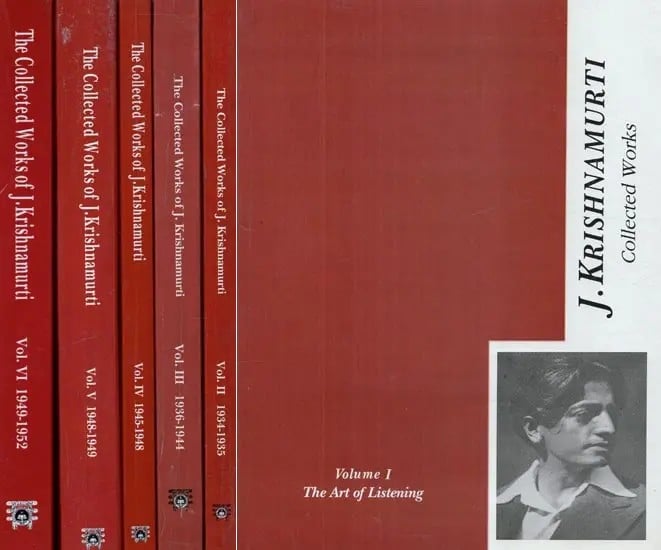
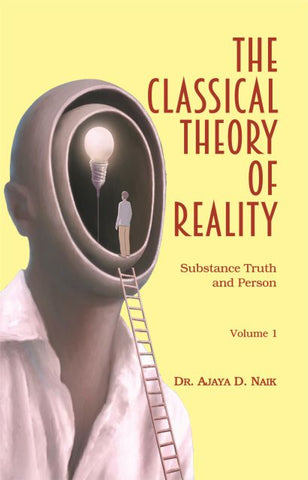

![A HISTORY OF INDIAN PHILOSOPHY [5 VOLUMES] by Surendranath Dasgupta](http://www.motilalbanarsidass.com/cdn/shop/products/HISTORYOFINDIANPHILOSOPHY_large.jpg?v=1675238163)
